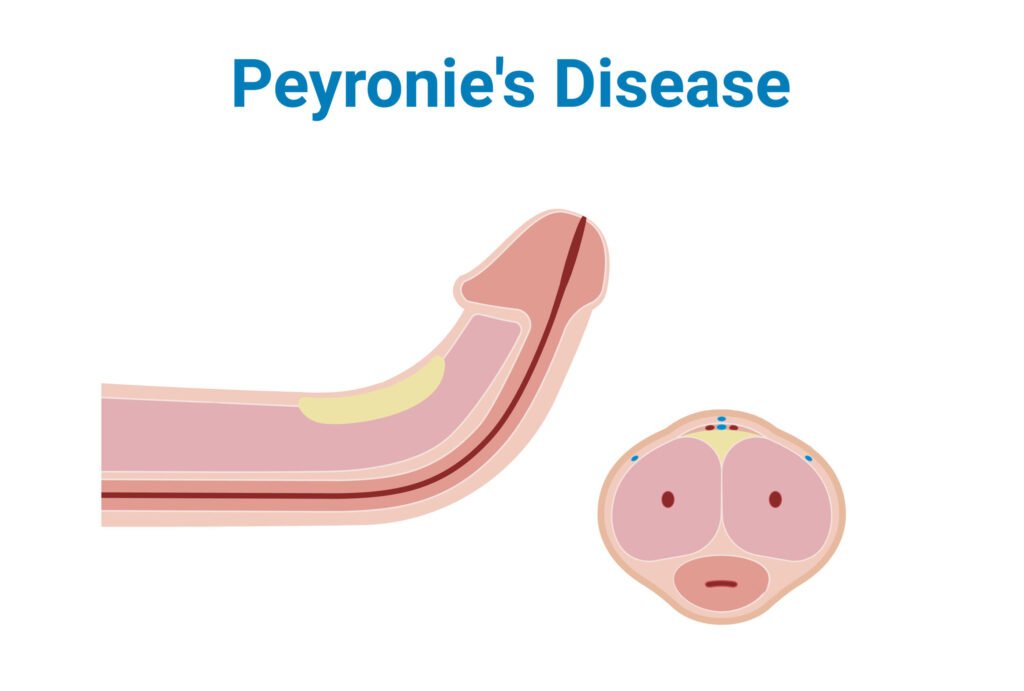Peyronie’s Disease: Expert Diagnosis at Lux Hospitals

Table of Contents
Peyronie’s disease, sometimes referred to as penile curvature disease, is a condition characterized by a noticeable curve in the penis during an erection. At Lux Hospitals, we recognize how the development of scar tissue often leads to this curvature, causing discomfort, embarrassment, and potentially painful erections.
What is Peyronie's Disease?
Peyronie’s disease is a medical condition marked by the formation of scar tissue inside the penis, leading to a noticeable curve during erections. This often causes pain, discomfort, and can affect sexual function. The exact cause is not always clear, but it may result from injury or genetic predisposition. Diagnosis and treatment can help manage symptoms effectively.
Types of Peyronie's Disease
Acute Phase: The early stage where scar tissue forms, often leading to pain and noticeable penile curvature.
Chronic Phase: A more stable stage where the curvature becomes consistent, pain lessens, and the scar tissue matures.
Hourglass Deformity: A type of Peyronie’s disease where a narrowing in the penile shaft leads to an hourglass-like shape.
Dorsal Curvature: Characterized by an upward bend of the penis due to scar tissue forming on the top side.
Ventral Curvature: Marked by a downward bend when the scar tissue forms on the underside of the penis.
Lateral Curvature: The penis bends to the left or right side due to scar tissue formation on the sides of the shaft.
Treatments of Peyronie's Disease
Medications: Oral or injection-based drugs like collagenase, verapamil, or pentoxifylline can reduce plaque size and curvature.
Traction Therapy: Devices designed to stretch the penis, like the RestoreX, help correct curvature over time.
Shockwave Therapy: Acoustic waves are used to break down scar tissue and promote healing.
Surgical Intervention: For severe cases, procedures like plication or grafting remove or reduce scar tissue.
Penile Stretching Exercises: Gentle stretching exercises can help improve mild curvature.
Red Light Therapy: Infrared light is used to improve blood flow and reduce pain.
Why Choose Lux for Peyronie's Disease Treatment?
At Lux Hospitals, our urology experts specialize in treating Peyronie’s disease using cutting-edge techniques like traction therapy, shockwave treatment, and surgical intervention. With comprehensive diagnostic tools and a compassionate approach, we tailor individualized treatment plans to restore confidence and improve quality of life.
Diagnosis of Peyronie's Disease
Medical History Review: Understanding symptoms, onset, and any history of penile injury.
Physical Examination: Feeling for hardened plaques or scar tissue along the penile shaft.
Erection Assessment: Using photographs or induced erection to measure the degree of curvature.
Ultrasound Imaging: Identifies scar tissue location, calcification, and blood flow issues.
X-Ray or MRI: Advanced imaging techniques to visualize plaque and soft tissue changes.
Causes of Peyronie's Disease
Penile Injury: Trauma or bending of the penis can lead to scar tissue formation.
Genetic Factors: A family history of Peyronie’s disease may increase the risk.
Connective Tissue Disorders: Conditions like Dupuytren’s contracture are linked to Peyronie’s.
Age-Related Changes: The risk increases with age due to reduced tissue elasticity.
Autoimmune Response: An abnormal immune response might cause the body to attack its tissues, forming plaques.
Symptoms of Peyronie's Disease
Penile Curvature: A noticeable bend or curve of the penis during erections.
Plaque Formation: Hard lumps or bands of scar tissue beneath the penile skin.
Painful Erections: Pain during erections or, in some cases, even without an erection.
Penile Shortening: The penis appears shorter than usual due to curvature or scar tissue.
Hourglass Deformity: A narrowing of the penile shaft resembling an hourglass shape.
Erectile Dysfunction: Difficulty achieving or maintaining an erection due to curvature and discomfort.
Tips to Prevent Peyronie's Disease
Avoid Penile Injury: Practice caution during sexual activity or sports to prevent trauma.
Manage Health Conditions: Control diabetes and high blood pressure to maintain healthy blood vessels.
Stop Smoking: Smoking damages blood vessels and can increase the risk of plaque formation.
Stay Active: Regular exercise improves blood circulation, benefiting overall sexual health.
Healthy Diet: A diet rich in antioxidants and vitamins promotes tissue repair and elasticity.
Routine Checkups: Early detection and monitoring can help address issues before they worsen.
Conclusion
Managing Peyronie’s disease is possible with the right guidance and treatment. At Lux Hospitals, our team provides tailored care to help you restore your confidence and well-being. Reach out to us today to schedule your consultation and explore effective treatment options.


